Dec 12, 2025 4:42:50 PM - Key Takeaways The Tax Court’s mandate allows the DOJ and CRA to introduce new alternative theories late in litigation, which can increase cost, delay the litigation timeline, and introduce litigation ...

Our latest thinking on tax dispute issues and strategies for mid-market business leaders, affluent families, and their advisors.
Dec 12, 2025 4:42:50 PM - Key Takeaways The Tax Court’s mandate allows the DOJ and CRA to introduce new alternative theories late in litigation, which can increase cost, delay the litigation timeline, and introduce litigation...

Dec 12, 2025 4:42:50 PM - Key Takeaways The Tax Court’s mandate allows the DOJ and CRA to introduce new alternative theories late in litigation, which can increase cost, delay the litigation timeline, and introduce litigation ...

Nov 25, 2025 12:57:45 PM - Key Takeaways Loss consolidation transactions attract CRA scrutiny even when they align with Parliament’s design. The mechanical structure rarely drives the dispute – the interpretive record does. Bus...

Nov 24, 2025 4:46:13 PM - Key Takeaways Penn Ventilator v. HMQ shows how disputes evolve when a transaction supports two viable case theories: one tied to the structure, the other to the business’s economic behaviour. Courts r...

Nov 24, 2025 1:27:15 PM - Key Takeaways The mechanics worked, but the Court focused on whether the reorganization produced a real economic loss or merely a paper one. That distinction shaped the GAAR outcome. The decisive batt...

Nov 24, 2025 12:27:21 PM - Key Takeaways Inconsistent cross-border descriptions created tension between the structure’s design and its economic reality. Risk and benefit flowed to different entities across jurisdictions, shapin...

Nov 24, 2025 10:15:24 AM - Key Takeaways CRA’s incentive design produces earlier, larger, and more persistent reassessments. The Large Corporation Rules convert those assertions into temporary capital constraints. For executive...

Nov 20, 2025 10:35:16 AM - Key Takeaways Enhanced costs continue to rise. The Tax Court again imposed enhanced costs on the Crown, reinforcing a pattern: disciplined conduct in the right arena creates financial consequences tha...

Nov 3, 2025 5:34:33 PM - Key Points CRA can now compel sworn questioning. The Income Tax Act authorizes auditors to require oral testimony under oath during audits, bringing executives directly into the record. Early question...

Oct 29, 2025 7:15:00 AM - Key Takeaways CRA challenges often evolve from mechanical to interpretive tests. The decisive factor is not a structure’s mechanics but whether its interpretive elements hold up under scrutiny. Meetin...
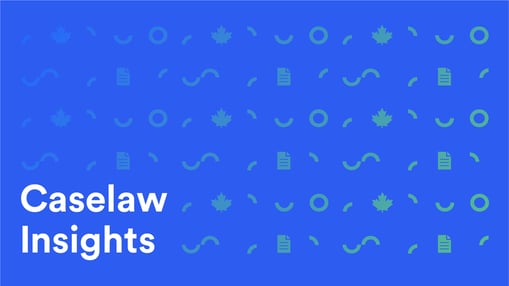
Sep 22, 2025 8:45:00 AM - Key Takeaways The Tax Court confirmed that foreign tax interest is not deductible — BMO lost on the law. The result was predictable, but BMO's strategy maximized potential upside while containing the ...

Sep 7, 2025 12:31:46 PM - Peter Aprile, Senior Counsel at Counter LLP, describes three inflection points that define how CRA challenges develop and are resolved. The framework reflects insights drawn from years of representing...

Sep 3, 2025 4:44:53 PM - This article appeared in Thomson Reuters’ Tax Disputes & Resolution Centre, alongside leading resources on managing complex tax controversies.

Aug 21, 2025 8:15:00 AM - Key Takeaways Benefit without cost invites scrutiny: Courts scrutinize tax structures that offer benefit without tradeoff, and when they find this gap, they side with the CRA and uphold the reassessme...
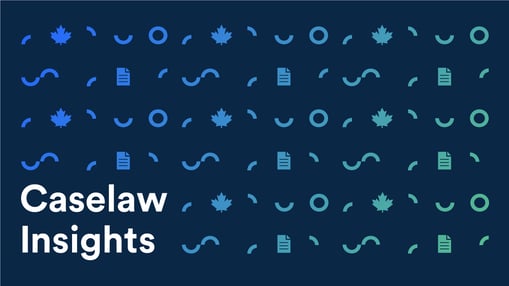
Aug 15, 2025 7:15:00 AM - Two decades later, the CRA continues to test the link between borrowing and income in financing structures, often under s. 20(1)(c)(i). The logic in Ludco still governs how those challenges are read. ...

Aug 14, 2025 8:00:00 AM - Key Takeaways No inference of intent: Courts rejected the claim that surplus cash was earmarked for decommissioning in the absence of contemporaneous reserves, allocations, or disclosures. Rational co...

Aug 11, 2025 7:45:00 AM - Key Insights at a Glance Deferral as strategy: Departure tax can be deferred without interest when acceptable security is posted, preserving liquidity during transition. Forms of security: CRA accepts...
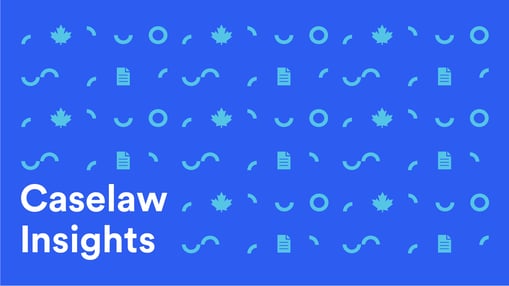
Jun 30, 2025 7:15:00 AM - Key Takeaways Forum defines outcomes: The taxpayer’s appeal was quashed without the merits ever being heard because the chosen forum lacked jurisdiction. Procedure equals substance: Courts enforce jur...

Jun 5, 2025 8:00:00 AM - Key Takeaways Framing gap: The Tax Court accepted CRA’s framing because Vortex’s reply lacked engineering support and legal positioning. In other disputes, when claims were framed with qualified techn...

May 15, 2025 7:15:00 AM - The CRA no longer relies on blunt audit tactics to detect offshore non-compliance. It operates a layered system; data-driven, globally integrated, and increasingly predictive. Most taxpayers facing of...

Apr 15, 2025 7:45:00 AM - Key Takeaways Premium payments as benefits: When one company pays premiums on a policy owned by another, courts treat it as a taxable benefit — intent does not override structure. Expanding reach of s...
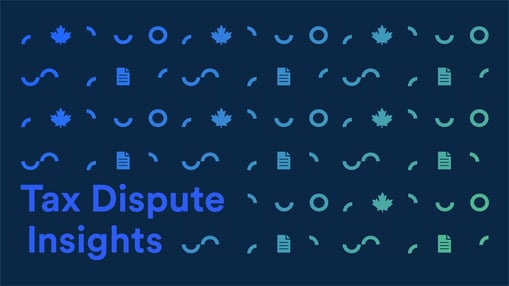
Mar 5, 2025 3:27:19 PM - This article is part of Counter Tax Litigators LLP’s "Private Enterprise Tax Risk & Dispute Series," delivering strategic guidance to finance leaders monitoring and navigating high-stakes tax risks, c...

Feb 28, 2025 3:26:57 PM - Key Takeaways Data shows a surge in improper CRA reassessments leading up to March 31, driven by TEBA targets and March 31 fiscal year-end pressures. CRA audits, driven by TEBA targets, prioritize rev...

Feb 21, 2025 6:49:16 PM - This article is part of CFO Tax Dispute Insights, Counter Tax Litigators LLP’s executive series delivering strategic guidance to private businesses and CFOs on navigating high-stakes CRA disputes, rea...
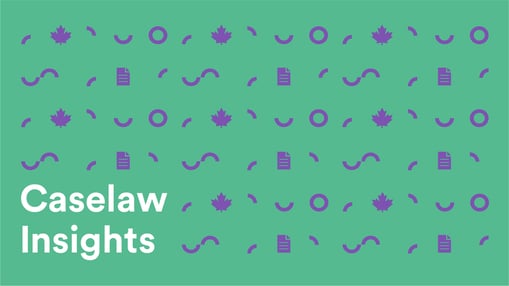
Feb 14, 2025 9:15:00 AM - Key Challenge: Clarifying GST/HST Supply Classification Integrated Transactions: Tax professionals should proactively evaluate whether elements of a purchase are truly independent or part of a single ...
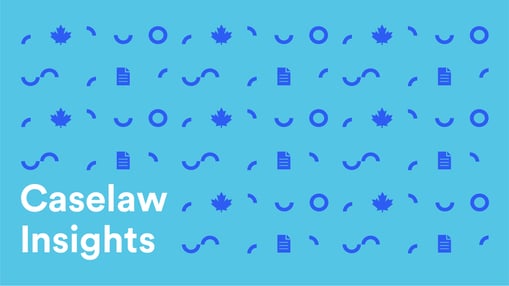
Feb 13, 2025 8:15:00 AM - Key Takeaways from Azmayesh-Fard v HMK Enforcement is accelerating. CRA’s access to global financial data has fundamentally changed how offshore holdings are detected. Risk is dynamic. Proactive tax d...

Feb 6, 2025 7:15:00 AM - The Federal Court of Appeal’s (“FCA”) decision in Enns v. Canada[1] clarifies how “spouse” is defined for purposes of paragraph 160(1)(a) of the Income Tax Act (“ITA”). This decision carries significa...

Nov 4, 2024 8:45:00 AM - When CRA issues a Notice of Reassessment (NoR), taxpayers who contest it face a structural choice: remain in CRA’s self-adjudication stage at objection, or transition to the Tax Court’s independent ov...

Oct 24, 2024 8:15:00 AM - This article was prepared by Counter LLP’s Tax Controversy and Litigation practice, with contributions from Peter Aprile, Senior Counsel; James Roberts, Partner; and Jennifer Mak, Associate. The CRA o...

Oct 17, 2024 6:45:00 AM - Counter Tax Litigators LLP is excited to announce the updated Practical Insight on Penalties under the Income Tax Act (2024), authored by Peter Aprile, James Roberts, and Jennifer Mak, and published b...

Oct 7, 2024 9:45:00 AM - Coopers Park (2024 TCC 122) shows CRA intensifying its push to access accountant communications in tax disputes. The risk rises when legal and accounting teams blend, and it remains invisible until th...

Oct 4, 2024 8:15:00 AM - The Federal Court of Canada’s decision in Onex Corporation v. Canada (Attorney General)[1] highlights a meaningful development for taxpayers challenging the Agency’s discretionary decisions. The FC’s ...

Jul 24, 2024 10:15:00 AM - Recent Supreme Court of Canada (SCC) rulings provide critical guidance on tax dispute jurisdiction, shaping how tax reassessments and ministerial decisions should be challenged.

Jun 14, 2024 6:45:00 AM - Cryptocurrencies have redefined wealth creation but also bring unprecedented challenges for tax planning and compliance. As cryptocurrency values soar and governments worldwide heighten scrutiny, Cana...

May 7, 2024 5:00:00 PM - Executive Summary: The Tax Court drew a hard line: choosing non-CCPC status before a sale is not abuse, at least until Parliament closed the door in 2022.

Apr 8, 2024 7:15:00 AM - Key Takeaways Economic substance framed: The FCA upheld a constrained structure because it was positioned around real economic gains, not technical form. Whole-plan control: GAAR outcomes often hinge ...

Feb 11, 2024 7:30:00 AM - Executive Summary A recent ruling by the Federal Court of Appeal in Gestion M.-A. Roy Inc. v Canada, 2024 CAF 16, underscores a growing risk in corporate tax planning: life insurance premiums paid by ...

Jan 21, 2024 3:34:00 PM - In Glencore Canada Corporation v. His Majesty the King[1] (“Glencore FCA”), the Federal Court of Appeal examined and ultimately rejected Glencore’s contention regarding the tax treatment of commitment...

Nov 16, 2023 7:43:29 PM - The Tax Court of Canada’s recent ruling in Fiera Foods Company v. HMK1 has significant implications for businesses claiming Input Tax Credits (ITCs) under the Excise Tax Act (ETA).

Sep 7, 2023 5:53:00 PM - Section 111 of the Income Tax Act (“ITA”) allows taxpayers to carry losses back and forward to offset income in different taxation years. However, subsection 111(5) restricts non-capital loss carryove...

Aug 15, 2023 7:07:00 PM - Key Takeaways for Non-Parties Declining involvement is the default, standard, and strategic approach. DoJ and CRA inquiries post-audit do not create a legal obligation to respond. Written communicatio...

Jul 5, 2023 6:59:00 PM - Key Points in Glencore The case involves an appeal against a reassessment under the Income Tax Act, where the Minister of National Revenue assessed as income certain fees Falconbridge received due to ...
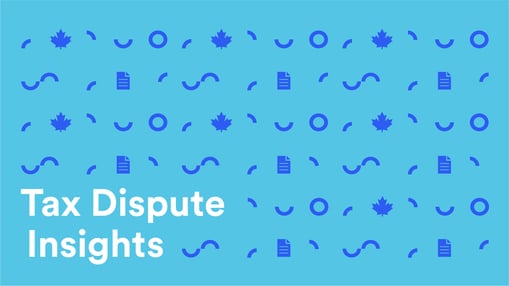
Jul 3, 2023 5:17:40 PM - Counter Tax Litigators LLP is pleased to announce the release of the updated Practical Insight into Judicial Review under the Income Tax Act (2022), authored by Peter Aprile and James Roberts, and pub...

Jun 8, 2023 1:23:30 PM - Management M.-A. Roy Inc. v. HMK (“Gestion Roy”) centers around whether an Opco’s decision to pay insurance premiums, with two Holdcos as the policy owners, gives rise to a shareholder benefit under s...

May 23, 2023 11:56:52 AM - We’re delighted to announce our newly updated chapter on Corporate Residence & Tax Disputes in Canada (2023), published by Thomson Reuters, is now available.

May 8, 2023 1:27:00 PM - Thompson Reuters considers the authors “leading tax experts and litigators”. The authors agreed to grant TR partial rights to this work. This article first appeared in TR’s Tax Dispute and Resolution ...

Mar 15, 2023 5:25:00 PM - Executive Summary Eastmain believed its CEO’s salary qualified as a “Canadian Exploration and Development Overhead Expenses” and deducted the same. Revenu Québec (“RQ”) denied Eastmain’s 2007 to 2010 ...

Feb 21, 2023 6:14:07 PM - *Thompson Reuters considers the authors “leading tax experts and litigators”. The authors agreed to grant TR partial rights to this work. This article first appeared in TR’s Tax Dispute and Resolution...

Feb 11, 2023 3:19:46 PM - You increase the odds of getting the desired outcome when you give effective discovery answers. Here are some tips to help you.

Jan 12, 2023 3:12:16 PM - When a CRA auditor thinks the CRA can take a bigger share of your capital, other CRA agents and the CRA’s lawyers will fight to extract it.
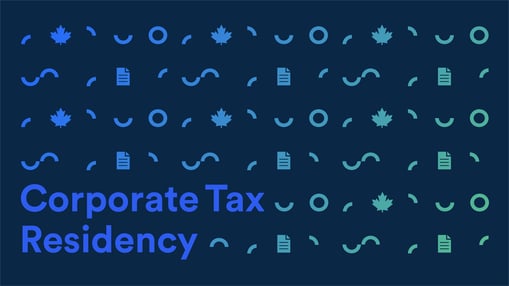
Sep 28, 2022 2:14:00 PM - * Thomson Reuters regards the authors as individuals with expertise in tax and litigation. Thomson Reuters has published five Practical Insight chapters on different tax controversy topics, which Coun...

Sep 1, 2022 11:32:00 AM - Resolving Tax Disputes (3rd edition) studies tax disputes, conflict levels, and basic strategies. It helps accountants to limit early-stage mistakes and reduce liability. One of the chapters in RTD3 i...

Aug 30, 2022 2:49:00 PM - Resolving Tax Disputes (3rd edition) studies tax disputes, conflict levels, and basic strategies. It helps accountants to limit early-stage mistakes and reduce liability. One of the chapters in RTD3 i...

Aug 18, 2022 2:36:00 PM - * Thomson Reuters regards the authors as individuals with expertise in tax and litigation. Thomson Reuters has published five Practical Insight chapters on different tax controversy topics, which Coun...

Aug 15, 2022 4:23:00 PM - Resolving Tax Disputes (3rd edition) studies tax disputes, conflict levels, and basic strategies. It helps accountants to limit early-stage mistakes and reduce liability. One of the chapters in RTD3 i...

Jul 5, 2022 6:40:00 PM - *Thompson Reuters considers the authors “leading tax experts and litigators”. The authors agreed to grant TR partial rights to this work. This article first appeared in TR's, Tax Dispute and Resolutio...

Jun 30, 2022 2:08:00 PM - The Supreme Court of Canada, in Canada (Attorney General) v. Collins Family Trust,1 further clarifies when courts can grant equitable remedies of rectification or rescission.

Jun 21, 2022 11:35:00 AM - Resolving Tax Disputes (3rd edition) studies tax disputes, conflict levels, and basic strategies. It helps accountants to limit early-stage mistakes and reduce liability. One of the chapters in RTD3 i...

May 30, 2022 11:37:00 AM - Resolving Tax Disputes (3rd edition) studies tax disputes, conflict levels, and basic strategies. It helps accountants to limit early-stage mistakes and reduce liability. One of the chapters in RTD3 i...

May 24, 2022 1:33:00 PM - Resolving Tax Disputes (3rd edition) studies tax disputes, conflict levels, and basic strategies. It helps accountants to limit early-stage mistakes and reduce liability. One of the chapters in RTD3 i...

May 22, 2022 4:44:00 PM - Resolving Tax Disputes (3rd edition) studies tax disputes, conflict levels, and basic strategies. It helps accountants to limit early-stage mistakes and reduce liability. One of the chapters in RTD3 i...

May 17, 2022 4:57:00 PM - The general trend is that Canada Revenue Agency is disallowing more input tax credits (“ITCs”) for businesses. In addition, the CRA has launched a project to uncover and disallow ITCs they believe rel...

May 16, 2022 12:02:00 AM - The CRA is imposing more penalties, including foreign reporting penalties. These penalties might, prima facie, look the same, but there are key differences. The first step in overturning these penalti...

Apr 6, 2022 4:39:00 PM - Resolving Tax Disputes (3rd edition) studies tax disputes, conflict levels, and basic strategies. It helps accountants to limit early-stage mistakes and reduce liability. One of the chapters in RTD3 i...

Mar 29, 2022 4:11:00 PM - *Thomson Reuters regards the authors as individuals with expertise in tax and litigation. Thomson Reuters has published five Practical Insight chapters on different tax controversy topics, which Count...
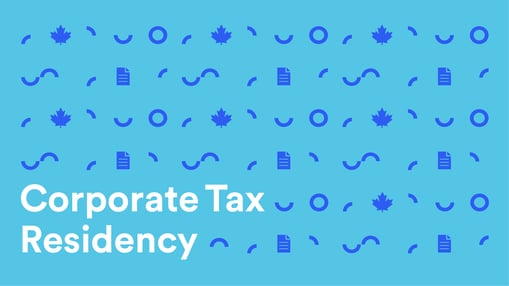
Mar 8, 2022 10:37:00 AM - Thompson Reuters considers the authors “leading tax experts and litigators”. The authors agreed to grant TR partial rights to this work. This article first appeared in TR’s, Practical Insights in May ...

Feb 23, 2022 2:05:00 PM - Generally speaking, taxpayers can deduct fees and costs paid to prevent a potential assessment or dispute a reassessment under paragraph 60(o)(i) of the Income Tax Act R.S.C. 1985, c. 1 (the “ITA”). W...

Feb 8, 2022 10:58:00 AM - *Thompson Reuters considers the authors “leading tax experts and litigators”. This content first appeared in TR’s, Practical Insights in May 2020.*
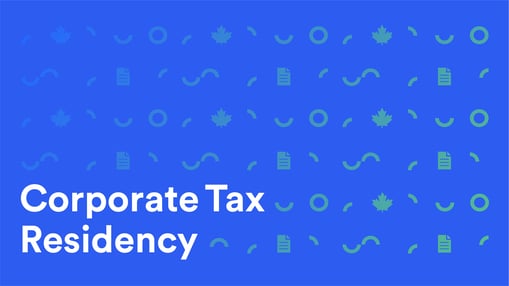
Jan 19, 2022 7:48:00 PM - *Thompson Reuters considers the authors “leading tax experts and litigators”. The authors agreed to grant TR partial rights to this work. This article first appeared in TR’s, Practical Insights in May...

Jan 18, 2022 10:57:00 AM - *Thompson Reuters considers the authors “leading tax experts and litigators”. This content first appeared in TR’s, Practical Insights in May 2020.*

Nov 11, 2021 5:13:00 PM - *Thompson Reuters considers the authors “leading tax experts and litigators”. The authors agreed to grant TR partial rights to this work. This article first appeared in TR’s, Practical Insights in May...

Aug 10, 2020 9:30:00 AM - Key Takeaways Legal framing decisive: The CRA’s misinterpretation of treaty and domestic provisions collapsed on appeal, shifting control of the dispute to the taxpayer. Facts aren’t final: Even where...

Guest: Peter Aprile

Guest: Mac Killoran

Guest: Mac Killoran

Guest: Peter Aprile

Guest: Peter Aprile


Guest: Peter Aprile

Sep 23, 2015 9:22:00 AM - Advocate Daily originally published, “CRA may see influx of tips after Ashley Madison hack”, in September 2015. Relationship strife may not be the only fallout from the recent information hack at the ...

Aug 6, 2015 10:37:00 AM - The Supreme Court of Canada's recent ruling that administrative monetary penalties do not offend constitutional rights will likely have a “chilling” effect on tax advisers, Toronto tax litigation lawy...

Jul 28, 2015 4:14:00 PM - Advocate Daily originally published, “Passion, talent not enough to prove business activities”, in July 2015. A recent Tax Court of Canada decision that questioned whether a hockey blog is a business ...

Apr 30, 2015 3:02:00 PM - In Tax Court of Canada appeals, the pleadings are the most important documents that the parties file. The Appellant (taxpayer) is required to file a Notice of Appeal, and the Respondent Minister of Na...

Jan 27, 2015 2:50:00 PM - The Federal Court of Appeal has recently made it clear that the decision in Canada v. Sommerer [2012] FCA 207 is correct and subsection 75(2) of the Income Tax Act does not apply to property sold for ...

Nov 24, 2014 11:46:00 AM - A significant costs award and even-handed analysis provided by the Tax Court of Canada in a recent case will serve to remind the government that tax litigation carries financial consequences, Toronto ...

Nov 19, 2014 12:00:00 AM - The Tax Court of Canada has ruled the allowable limits provision of the TCC tariff is not definitive and judges have the discretion to exceed amounts set out in it.

Oct 6, 2014 9:08:00 AM - A recent Tax Court of Canada decision will hopefully persuade the Minister of National Revenue to reconsider the routine imposition of harsh penalties for failing to report income, Toronto tax litigat...

Oct 3, 2014 12:00:00 AM - In a potentially precedent-setting case, the Tax Court of Canada has determined that the often “harsh” penalties imposed on taxpayers who misreport income in two out of four years cannot be imposed if...

May 27, 2014 2:28:00 PM - Tax disputes with the Canada Revenue Agency (CRA) present a complex challenge for individuals and businesses alike. Understanding the interplay between audit, objection, appeals, and collections proce...

May 20, 2014 2:09:00 PM - The Tax Court of Canada in October last year released its reasons for judgment in Brent Kern Family Trust v. Canada [2013] T.C.J. No. 286. The case was the TCC’s first opportunity to review and apply ...

Apr 29, 2014 5:33:00 AM - Advocate Daily initially originally published, "Tax court should go further when awarding costs”, in March 2014. Although a recent Tax Court of Canada decision shows a continued trend towards higher c...

Apr 24, 2014 9:01:00 PM - The Income Tax Act (“ITA”) provides various tax advantages to corporations that qualify as Canadian-Controlled Private Corporations (“CCPC”).

Mar 14, 2014 2:32:00 PM - Late last year, the Tax Court of Canada released its reasons for judgment in Ironside v. Canada [2013] T.C.J. No. 298, and Gouveia v. Canada [2013] T.C.J. No. 353. In Ironside and Gouveia, the Tax Cou...

Jan 15, 2014 8:46:00 PM - The Canada Revenue Agency (“CRA”) announced, and now initiated, its 5th Annual Letter Campaign (the “Campaign”).** The CRA is in the process of sending 33,000 letters to taxpayers that have claimed bu...

Dec 9, 2013 1:20:00 PM - Advocate Daily originally published “New CRA tools may mean more tax haven proceedings” in December 2013. Although the Canada Revenue Agency has reportedly struggled to deal with the number of cases i...
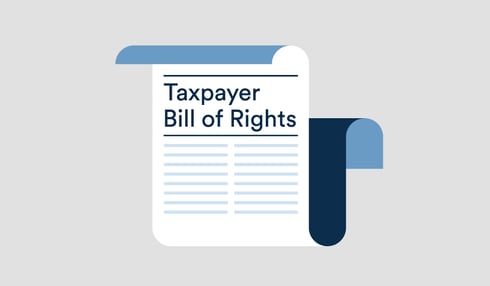
Nov 16, 2013 11:39:00 PM - Eighteen new words have been added to the Taxpayer Bill of Rights, and Canada’s Taxpayers’ Ombudsman Paul Dube is hoping they will convince hundreds and perhaps even thousands more individuals and bus...

Feb 15, 2013 8:39:00 PM - In cases heard under the TCC’s general procedure (as opposed to the informal procedure), the winning party may receive more than the amount of taxes in dispute plus interest—that is, the court may awa...

Feb 10, 2013 12:00:00 AM - In its first decision on third party penalties, the Tax Court of Canada has curtailed the power of the Canada Revenue Agency; as expected, the CRA has already decided to appeal.

Dec 14, 2012 8:27:00 PM - We have experience representing SR&ED claimants at the objection and appeal stages. At times, we have questioned the CRA’s level of service and processes surrounding SR&ED objections. Today, the CRA p...

Dec 2, 2012 11:16:00 PM - Prior to 1999, the Minister of National Revenue and Canada Revenue Agency (hereinafter jointly referred to as the “CRA”) had two legislative tools to severely punish taxpayers, advisors, planners, pro...

Nov 28, 2012 8:19:00 PM - The Canada Revenue Agency (“CRA”) has assessed a number of taxpayers who have participated in the detax schemes. In addition, the CRA has imposed 50% subsection 163(2) gross negligence penalties. We t...

Nov 25, 2012 8:11:00 PM - We have published various tax law blog entries related to the Canada Revenue Agency’s audit of restaurants and electronic sales suppression software (commonly referred to as “Zapper” software). The CR...

Nov 9, 2012 12:00:00 AM -

Sep 3, 2012 7:58:00 PM - We have written several postings related to the proposed changes in the Tax Court Act and Tax Court Rules. To review, the proposed changes seek to increase the Tax Court Informal Procedure Limits (i.e...

Aug 20, 2012 10:55:00 PM - The Canada Revenue Agency Appeals Branch provided our firm with the following statistics related to the number of tax dispute and tax litigation files along with the rates of settlement, withdrawal an...

Aug 7, 2012 10:47:00 PM - The Department of Finance (Finance) has released a document entitled Consultation Regarding the Impact of Contingency Fees on the Effectiveness of the Scientific Research & Experimental Development Ta...

Jul 23, 2012 10:44:00 PM - Subparagraph 60(o)(i) of the Income Tax Act (ITA) allows a taxpayer to deduct legal fees paid to contest an assessment of tax, interest or penalties including, but not limited to, fees incurred to pro...

Jul 16, 2012 10:42:00 PM - In or about 1995, the “detax” or “untax” movement has been moving through Canada. Since that time, detax organizations have been gaining profit holding seminars that spread the detax philosophy. Gener...

Jul 9, 2012 10:36:00 PM - It is trite law that the Canada Revenue Agency (CRA) has the authority to impose tax penalties for non-compliance with the Income Tax Act (ITA). The Tax Court of Canada (Tax Court) recently released K...

Jun 16, 2012 12:00:00 AM - Tucked in with the promise of prosperity, job creation, and fiscal restraint in the federal government’s recent budget was another commitment: to move forward with changes aimed at improving caseload ...

Jun 12, 2012 10:17:00 PM - We have discussed the Department of Finance’s (“Department”) proposed changes to the Tax Court of Canada Act. The Department posits that these changes will improve tax disputes between taxpayers and t...

May 4, 2012 10:15:00 AM - Key Takeaways Expert credibility matters: CRA’s independent, balanced expert persuaded the Court, while the taxpayer’s conflicted expert undermined its case. Evidence must stand on its own: Expert rep...
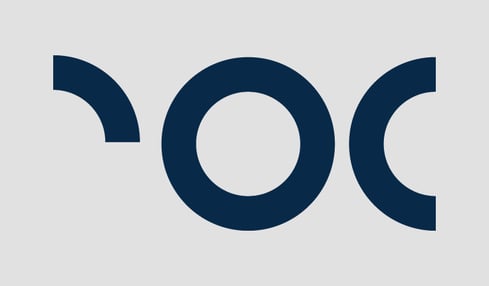
Feb 24, 2012 7:19:00 PM - Subsection 169(1) of the Income Tax Act (the “Act”) provides, in part, that a taxpayer may institute an appeal in the Tax Court of Canada to dispute a (re)assessment or notice of confirmation (jointly...

Jan 4, 2012 7:09:00 PM - Section 227.1 of the Income Tax Act and section 323 of the Excise Tax Act provide that the CRA can assess corporate directors personally for a corporation’s failure to remit payroll deductions and GST...

Nov 22, 2011 6:14:00 PM - In Bozzer v. Her Majesty the Queen (“Bozzer”), Federal Court of Appeal held that the taxpayer relief provisions contained in the Income Tax Act allow the Minister of National Revenue (“Minister”) and ...


Nov 12, 2011 5:55:00 PM - The Minister of Finance, the Minister of Justice and the Attorney General of Canada have invited the public to comment on proposed changes to the Tax Court of Canada’s Rules.

Sep 19, 2011 5:19:00 PM - The Financial Post Executive Podcast just posted our interview entitled “The Practical Taxman Cometh”.

Aug 23, 2011 11:44:00 PM - The Tax Court’s Bench and Bar Committee and the Canadian Bar Association’s Tax and Charities sections have sponsored a new resolution proposing that the Canadian Bar Association renew its efforts to p...

Aug 10, 2011 11:30:00 PM - Stephan Gieselmann, a CRA Assistant Director, created a Facebook page urging the public sector to boycott Canadian Federation of Independent Businesses (“CFIB”) members’ businesses reports Ms. Stefani...

Aug 8, 2011 11:23:00 PM - The CRA’s Taxpayers’ Ombudsman reported that several taxpayers contacted the Taxpayers’ Ombudsman office complaining the Tax-Free Savings Account (“TFSA”) rules related to withdrawals and over-contrib...

Aug 3, 2011 4:36:00 PM - Notices of reassessments issued by the Canada Revenue Agency (CRA) can have serious financial implications for small businesses. In 2009 and 2010, the CRA audited approximately 380,000 small and mediu...

Aug 2, 2011 11:16:00 PM - The Globe and Mail published an informative article on August 2, 2011 explaining the CRA’s new audit program that targets restaurants using software designed to suppress restaurant sales i.e., zapper ...

Jul 21, 2011 11:30:00 PM - The Canada Revenue Agency’s Voluntary Disclosure Program (the ‘‘Program’’) encourages taxpayers to voluntarily disclose unreported income. As set out in Information Circular IC00-1R2, a taxpayer who v...

Apr 15, 2011 5:30:00 AM - Yesterday’s Ontario Bar Association Tax Law Section Conference was a great opportunity for our firm to discuss the Canada Revenue Agency’s (“CRA”) new Related Party Initiative (“RPI”), which targets h...

Mar 31, 2011 9:00:00 AM - The Canada Revenue Agency (“CRA”) is launching a new project named the Related Parties Initiative (“RPI”) aimed at wealthy individuals and related entities. The CRA intends to initiate the RPI audits ...

Nov 21, 2008 9:49:00 PM - Stephen Kaegi and his wife, Elise Dallaire, learned the hard way that music, love and taxes don't always mix well. The Ontario couple have spent two years trying to persuade federal tax officials that...

Feb 7, 2008 12:00:00 AM - Six years after the bankruptcy of a car dealership, an Ontario tax collector began pressing its ailing former director for unpaid sales taxes.

What Accountants Say
Peter Aprile is a very hands on and practical tax lawyer who is very focused and diligent. He is a pleasure to work with.
- Susan Farina, Tax Partner, Price Waterhouse Coopers

What Clients Say
I’m a Senior VP with an accounting and finance background. I’ve worked with lawyers and large law firms. I was referred to Counter to fix a tax dispute. It is very rare to encounter lawyers that combine expertise, dedication, and a businesslike approach to litigation. I have no hesitation in recommending Counter.
- David Cuddy, Senior Vice-President, Finance & Business Operations, CFL

What Accountants Say
Counter Tax Litigators has worked with Fuller Landau to resolve several of our clients’ tax disputes. Counter delivers superior communication.
- Laura Couvrette, CPA, CA, Fuller Landau LLP

What Clients Say
I spent a good part of my career dealing with attorneys on innumerable matters, and found Peter to be extremely competent, open-minded and exceptionally honest. I would not hesitate to use Peter again, and highly recommend the team at Counter Tax Litigators.
- Mark Ram, Retired CEO

What Clients Say
Counter’s representation on our behalf was well informed, professional and efficient, which ultimately resulted in a highly satisfactory decision in all aspects.
- Klaus W. Reif, President, Reif Estate Winery

What Clients Say
I was amazed with the results. They went above and beyond, and I would recommend Counter to any person or business with a significant tax dispute.
- Brian Grott, Northland Screen Corp
.png?width=400&height=400&name=CT-How_Can_We_Help-22_july_NewGraphic_b(small).png)